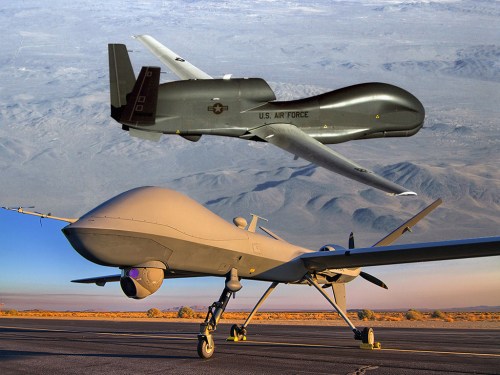
Drone Wars UK can reveal that British armed Reaper drones have secretly been equipped with a US intelligence gathering capability called ‘Outdragon’ since around 2019.
Signal Intelligence (SIGINT) pods on US Reaper and Predator drones have been used to geolocate, track and kill individuals via signals from mobile phones, wireless routers or other communication devices using a variety of systems developed by intelligence agencies with codenames such as Airhandler and Gilgamesh.
In response to our FoI requests on the capability, the Ministry of Defence is refusing to confirm or deny any information other than the existence of a 2019 contract to integrate it with UK Reaper drones.
The existence of Outdragon and its use by the UK was confirmed by the (possibly mistaken) publication online of a series of MoD maintenance forms relating to the UK’s new MQ-9 ‘Protector’ drone.

Image from: Flying Log and Fatigue Data Sheet – MOD Form 725(Protector RG-1)(AV)
Documents released by Edward Snowden show that UK AIRHANDLER missions are developed and controlled from the UK’s Joint Service Signals Unit (JSSU) at RAF Digby, which is the nearest military base to the home of UK drone warfare, RAF Waddington. A 2017 Intercept article, based on documents from Snowden, showed that US and British intelligence officials worked “side by side” at the base using AIRHANDLER with UK Reaper drones to gather data and develop near real-time intelligence for military and intelligence operations. Read more


